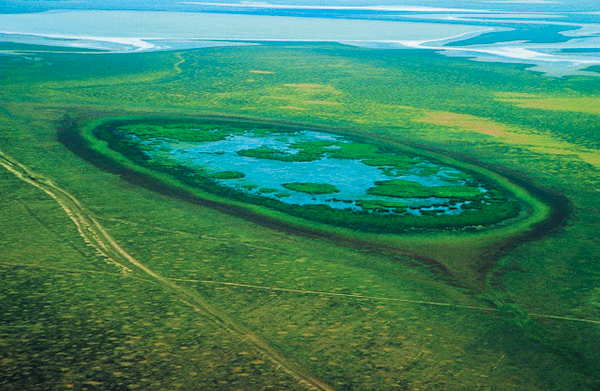KAZAKHSTAN, ASIA
Lake Tengiz &
Korgaljinski Lakes
Lake Tengiz and Korgaljinski Lakes are located in Kazakhstan in Central Asia. Lake Tengiz is a saltwater lake, dotted with undisturbed islands, habitat to wildfowl for both breeding and migration. The lake stretches over 1.600 km², with a depth of only 8 meters. Nearby you will find the Korgaljinski Lakes, a network of freshwater lakes forming a huge marshland complex, fed by the Nura river. Vast steppe areas surround the lake, leading to a unique combination between water and land.
What makes it special
Lake Tengiz reserve is an important resting place for migratory birds and is home to one of the largest concentrations of birds in the whole of Asia. Lake Tengiz alone can nourish around 15 million birds.
Protection status
· Ramsar Site 107, Wetland of International Importance
· UNESCO World Heritage Site

Biodiversity
In the marked-off zone, Kazakh and German biologists counted about 500 plant, 347 bird, and 43 mammal species among the Saiga Antelopes and Marmots. The islands in Tengiz host up to 50.000 nesting pairs of Greater Flamino and 1.300 pairs of Great Black-headed Gull. In the steppe around the shores nest Steppe Eagles and Demoiselle Cranes. Many Siberian nesting birds moult or rest at Lake Tengiz before migrating to the Caspian Sea, the Persian Golf, Western Europe. Some continue to the Mediterranean Basin or Africa. About 2 million waterfowl are involved, including 25.000 Black-necked Grebes, 200.000 White-fronted Geese, 240.000 Shelducks, 50.000 Goldeneyes, and 80.000 Red-necked Phalaropes.

Local Communities
The semi-arid grassland is sparsely populated. The people are almost entirely Kazakh in the Korgalzhyn area and 75% Kazakh in the Naurzum area. Since 1990 the whole region has depended on diminishing livestock farming and the productivity of the Naurzum area has halved. The region is one of the poorest in Kazakhstan, with very high unemployment.
Threats
There are currently no confirmed high or very high threats to the site’s values and two main issues that used to affect the site in the past (decreasing water level of freshwater lakes and water pollution, particularly with mercury) seem to have been addressed. Poaching and legal hunting remain a high threat and will require additional efforts in order to control them effectively.


